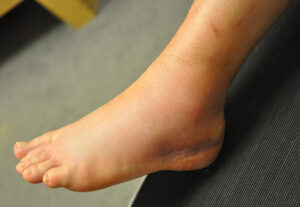Looking to other countries’ models of health care can hold the key.
This article originally appeared in Impact magazine and can be viewed there. It has been updated slightly here.
We have established previously that physical therapists have a total market penetration of around 5 percent. To review, using low back pain as an example, we know that about 50 percent of people with low back pain go to see their primary care providers. Of those 50 percent, between 7 percent and 11 percent, depending on location, end up accessing a physical therapist.1
So, how do we increase that number? How do we increase our market penetration?
We are lucky to have marketing experts assisting physical therapists with getting the word out about what we do and how we can help people. They are helping physical therapists with social media marketing, workshops, brand building, and content marketing. All of these methods can help. In this environment, how do we further this effort in order to accelerate market penetration and new patient referrals?
…placing physical therapists into primary care practices saves time for the general practitioners and reduces referrals to “hospital-based services” by 16 percent, saving the system money
Sometimes what’s old is what’s new. And in that vein, the United Kingdom’s National Health Service is piloting a “scheme,” as they call it, to place physiotherapists directly into general practice as part of the primary care team. It will begin in North Wales.2 It has been found that placing physical therapists into primary care practices saves time for the general practitioners and reduces referrals to “hospital-based services,” further diagnostics, imaging, etc., by 16 percent, saving the system money.
Were we to consistently implement this system here, in the US, we could increase the number of appropriate patients getting to physical therapists. We know the need exists. But sometimes we wait for governments and companies to implement programs that we could be implementing on our own. And that is where “innovation” comes in.
What is to stop us from arranging these types of initiatives directly with primary care physicians and providers? Do you know any family practice physicians or general practitioners who are looking to improve how they care for their patients?
Statistically, 10 percent to 28 percent of patient visits to their primary care doctor are for a musculoskeletal reason.3 A primary care physician will see 100–125 patient visits in a week.4 That means between 10 to 35 of those patient visits are for a musculoskeletal issue. Of those, how many do you think would benefit from seeing a physical therapist? This is a judgment call and will vary by practice,  but a conservative estimate would be around 50 percent. Following that logic, that leaves 5–17 patients a week, in each and every primary care provider’s practice, who would benefit from the services of a physical therapist. Do you have any primary care referral sources who are sending you 20–60 patients a month?
but a conservative estimate would be around 50 percent. Following that logic, that leaves 5–17 patients a week, in each and every primary care provider’s practice, who would benefit from the services of a physical therapist. Do you have any primary care referral sources who are sending you 20–60 patients a month?
So, given this, are there opportunities for us to work more closely with existing primary care physicians? And what about urgent care centers?
What if you were successful in having a physical therapist from your practice spend a half-day each week in a primary care physician’s office or at a group practice? The physician’s staff could triage the incoming phone calls and schedule most of the musculoskeletal patients at a time when the physical therapist was available.This process might not capture all patients who would benefit, but it would be an opportunity to get more people to the right provider earlier, as well as educate the primary care providers around what kinds of patients are appropriate to send to a physical therapist.
Imagine if in your community you could move from 5 percent market penetration to 10 percent. That would be a doubling of the new patients that you could help and see. Provided we continue to deliver outstanding quality and results for this expanded population, this would help to further spread the word and thereby increase our market penetration even further.
We have the research to substantiate that we save money and quicken time to recovery when people get to a physical therapist earlier in the injury cycle. We have to start finding improved ways to increase the number of people who get to us. This results in better patient outcomes, cost savings for the system, and significant business growth for your practice.
Call to Action for Physical Therapists
Ideas are great.
Articles are great.
My challenge to you is to do something with this one idea.
Can you, today, call three primary care physicians with whom you already have a relationship?
Can you begin the conversation of how you might better help their patients with musculoskeletal issues?
And when you do, please reach out and let me know!
I’d love to hear and share your success stories!
And please share this with someone you know!

![]()
References
1. Fritz JM, Childs JD, Wainner RS, Flynn TW. Primary care referral of patients with low back pain to physical therapy: Impact on future health care utilization and costs, 2012. Spine 2012; 25:2114-21.
3. www.aaos.org/AAOSNow/2007/MarApr/reimbursement/reimbursement2/?ssopc=1.
4. www.aafp.org/fpm/2007/0400/p44.html.
Picture Credit: http://orthoinfo.aaos.org
